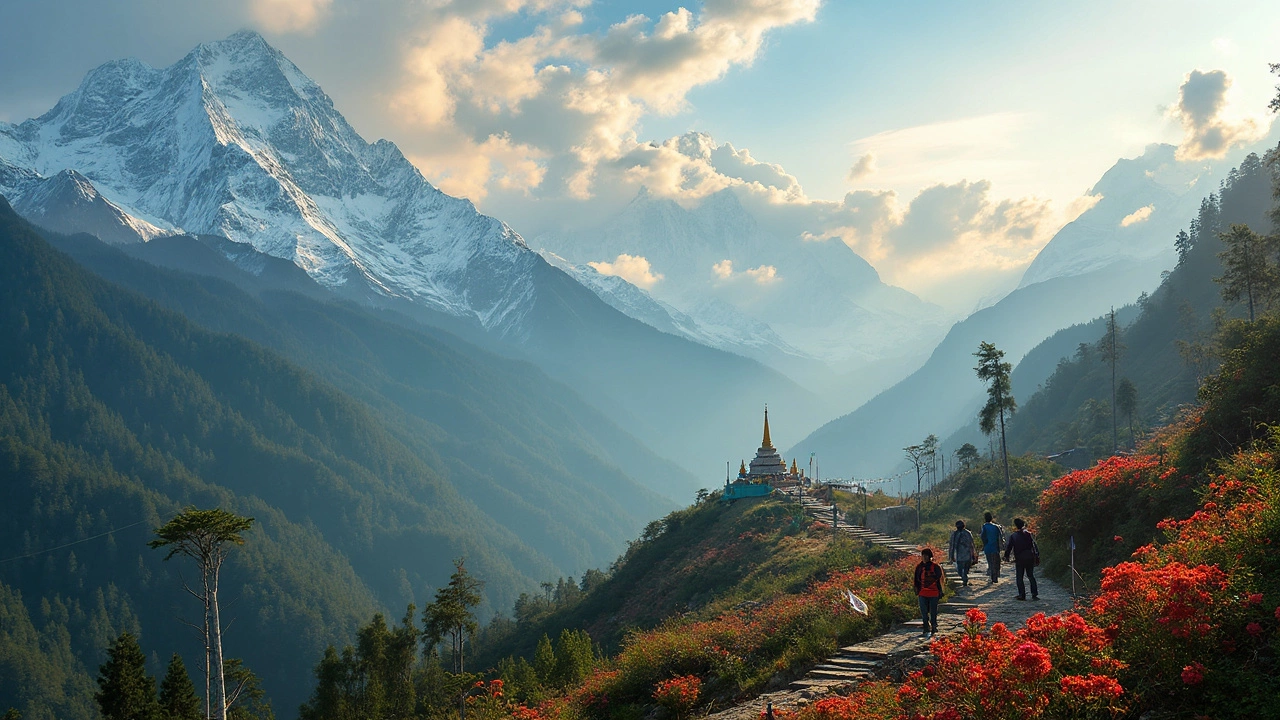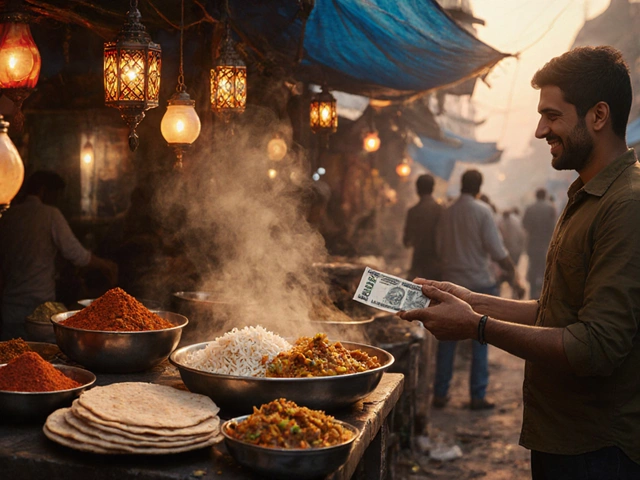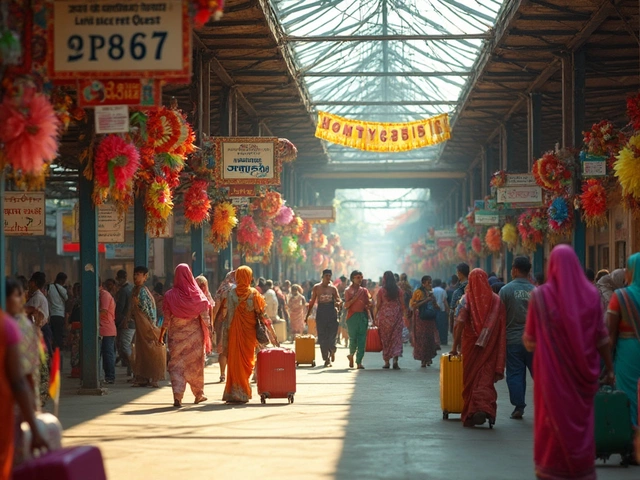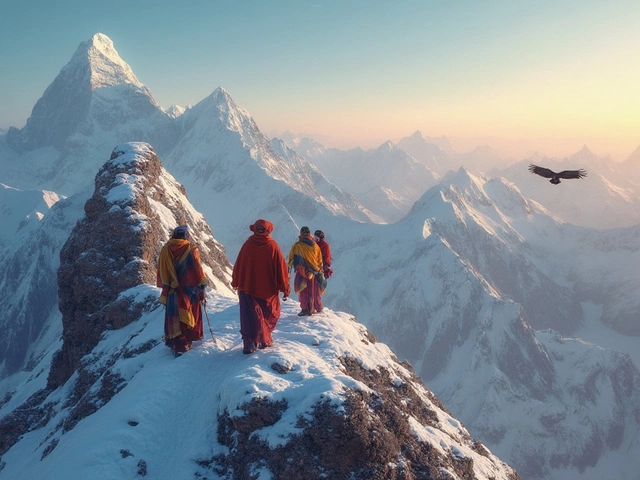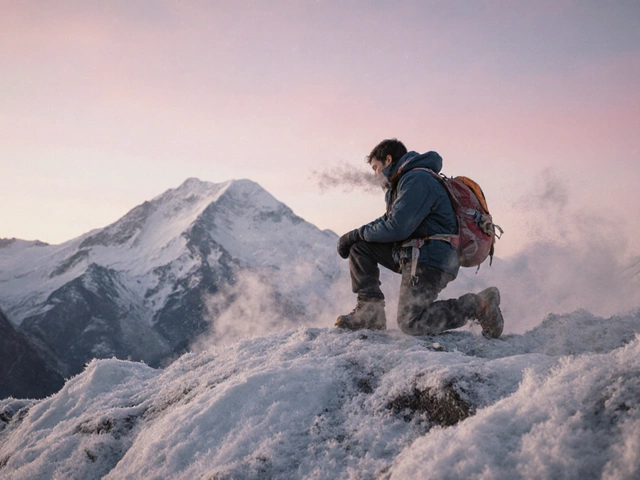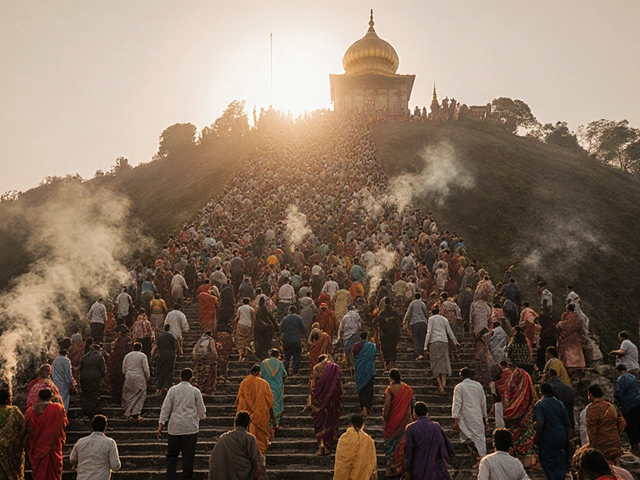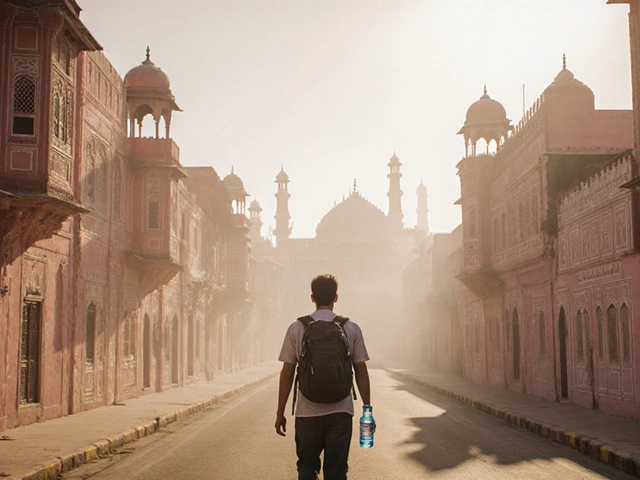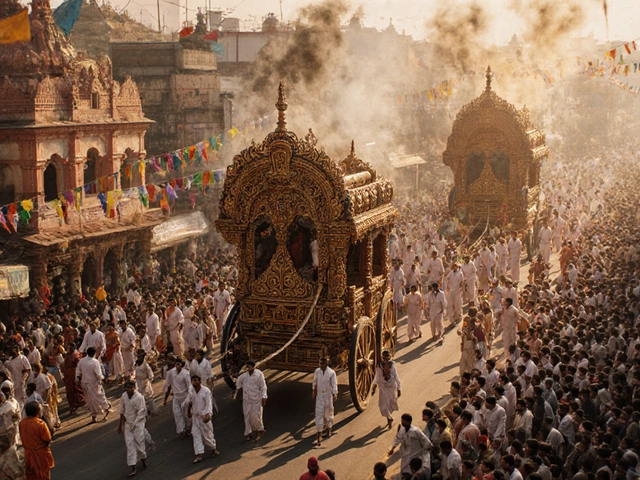It might surprise you that India, with its overflowing heritage list, has just one 'mixed' World Heritage Site. What does that even mean? A mixed site has to tick two boxes at once: jaw-dropping nature and deep cultural history, all tangled up together. Getting UNESCO to nod at a place for both isn't easy—most spots around the world get in for either culture or nature, but rarely both.
So, if you're the kind of traveler who craves a place that packs dreamy landscapes and ancient folklore into the same trip, listen up. Khangchendzonga National Park in Sikkim is the only Indian site to make the cut. Not just for its snowy peaks and rare animals, but for its local legends, rituals, and the way people and land are part of the same story. Let’s see what sets this place apart and why it matters for anyone who loves the real, gritty mix of nature and local culture.
- What Makes a Site 'Mixed'?
- Meet Khangchendzonga National Park
- Nature Meets Culture: The Unique Combo
- Snapshot: Fast Facts and Recognition
- Travel Tips for Visiting
- Why Is It the Only One in India?
What Makes a Site 'Mixed'?
So, what does it really mean when a place gets called a 'mixed' World Heritage Site by UNESCO? Most people know Heritage Sites as either natural wonders—think wild forests, cool wildlife, or huge mountains—or cultural gems, like ancient temples or historic cities. A mixed site pulls off both at once.
Here’s how it works: for any site to get the mixed tag, it needs to meet at least one of UNESCO’s natural criteria and one of the cultural ones. And these aren't just tick boxes. Natural criteria involve things like unique scenery, rare species, or world-class examples of how nature works. The cultural side expects things like traditional rituals, spiritual beliefs, or ancient art deeply tied to the spot.
- Natural criteria include untouched forests, rare animal habitats, or outstanding natural beauty.
- Cultural criteria count things like local folklore, architecture, or spiritual importance—that's stuff you can’t just move somewhere else.
This combo is harder to pull off than you would think. Out of over 1,100 UNESCO sites worldwide, less than 40 are labeled as mixed. That puts them in a pretty exclusive club. When you see a site with this double status, it means people and nature have been intertwined there for ages, and you can't separate one from the other without losing the whole story.
In India, only one place has landed on this list—the mixed World Heritage site India is a real standout, and soon you’ll see why.
Meet Khangchendzonga National Park
Khangchendzonga National Park sits high up in Sikkim, right at the eastern edge of the Himalayas. It covers about 1,784 square kilometers. That’s almost one-fourth the size of Sikkim. The park gets its name from Mount Khangchendzonga, the third highest mountain in the world, reaching 8,586 meters above sea level. Locals see the mountain as sacred, blending natural wonders with spiritual traditions.
People talk a lot about tigers and elephants in India, but here it’s all about snow leopards, red pandas, Himalayan tahr, and even the rare musk deer. There’s a crazy variety of birds you won’t spot anywhere else, like the blood pheasant and the Himalayan monal. This place is also home to glaciers, clear lakes, dense forests, and some seriously steep valleys. The weather can flip from sunny to misty in a matter of hours, so always pack layers if you plan to go.
The cultural side is just as interesting as the wildlife. The Lepcha and Bhutia communities have lived here for centuries. Their stories and customs shape daily life in the region. Pilgrimages to holy lakes and rituals at mountain shrines are a normal part of the calendar. The area still keeps old traditions alive, and UNESCO calls Khangchendzonga one of the best spots worldwide where nature and cultural beliefs remain closely tied.
What makes this site extra unique and worthy of being the only mixed World Heritage site India boasts? It’s not just the epic landscapes or rare animals; it’s the way people here treat the land—with tons of respect. Legends say hidden valleys in the park were once believed to be safe havens, kept secret for dire times. If you’re hoping for stories, you won’t leave disappointed.
If you’re thinking about visiting, know that getting here isn’t as simple as catching a cab. Access is mostly by foot, with the closest town, Yuksom, serving as a base for treks. You’ll need a permit, and going with a registered guide is a must. The best months to get the most out of the trails and views are April to June or September to November. This spot isn’t just for hardcore trekkers; anyone willing to walk a bit stands to be blown away by what they find.
Nature Meets Culture: The Unique Combo
So, what puts Khangchendzonga National Park in a league of its own? Unlike most places that win recognition just for history or scenery, this one delivers both in full force. Picture mountain glaciers, deep green forests, endangered red pandas—and then, tucked right in, you find sacred landscapes and a way of life that’s still shaped by old stories and local traditions.
This park covers almost 1,800 square kilometers, which sounds big, but it’s the variety that blows your mind. One minute you're hiking below the third-highest peak in the world, the next, you’re passing through small local settlements clinging to their unique blend of Tibetan Buddhism and ancient shamanic beliefs. For centuries, these communities have seen the mountains as more than stone—they’re living spirits, and the park is dotted with sacred sites where rituals and prayers are still a daily thing.
Here’s a cool fact: Khangchendzonga isn’t just a protected zone for plants and animals. UNESCO calls it a “repository of sacred and cultural traditions.” According to the official citation,
"Khangchendzonga is not only of outstanding natural beauty, but also has an exceptional cultural significance, uniquely combining sacred landscape with the traditional knowledge and beliefs of the indigenous communities."
Bringing together such totally different values is rare, not just in India but worldwide. It’s that mix—nature’s wild side and people’s deep-rooted practices—that made it the only mixed World Heritage site in India.
- Home to over 550 species of birds and 18 types of mammals, including the clouded leopard.
- The park includes dozens of lakes, glaciers, and several peaks over 6,000 meters.
- Locals celebrate the park through annual festivals and traditional rituals—many visitors time their trips to catch these events.
Numbers speak louder than words sometimes, so check out this snapshot:
| What | Details |
|---|---|
| Area Covered | 1,784 sq km |
| Major Peak | Khangchendzonga (8,586 m) |
| Recognized By UNESCO | 2016 |
| Main Cultural Groups | Lepcha, Bhutia |
| Number of Endangered Animals | At least 19 species |
So, when people ask what makes this park special, the real answer is: it works as a bridge. It protects snow leopards and sacred caves at the same time. That’s rare—and something India can truly brag about.
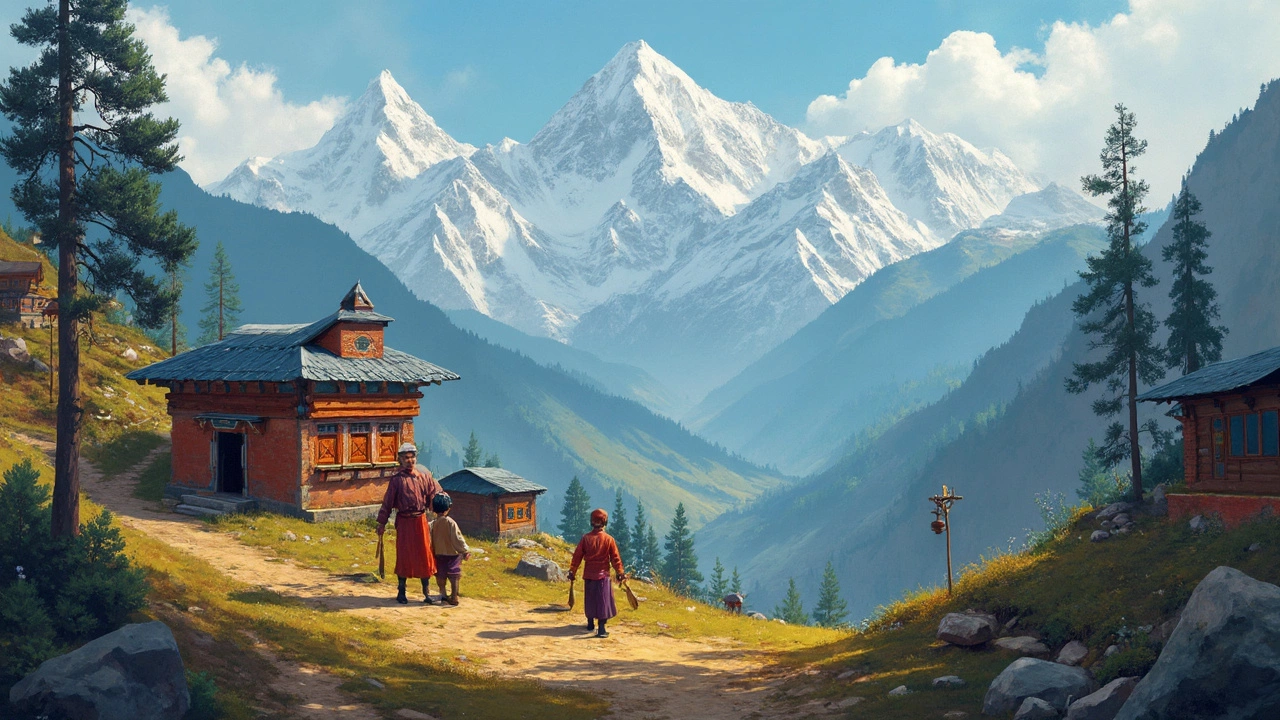
Snapshot: Fast Facts and Recognition
Khangchendzonga National Park didn’t just stumble into UNESCO’s list. It landed there in 2016, and it’s a big deal because it stands as India’s one and only mixed World Heritage site. Here’s what makes it special, in plain numbers and facts.
- The park covers a massive area of about 1,784 square kilometers, about the size of a small country.
- It’s home to Mount Khangchendzonga—the third highest mountain in the world at 8,586 meters. That’s higher than anything you’ll see outside of Asia.
- The park’s cultural side is wrapped up in local Sikkimese beliefs, sacred stories, and pilgrimages that are still active today.
- Both Lepcha and Bhutia communities, who’ve lived here for centuries, see these mountains, forests, and lakes as sacred. You’ll hear locals talk about the area as ‘Mayel Lyang’—the hidden land.
- Wildlife here is rare anywhere else in India—think snow leopards, red pandas, and Himalayan black bears.
Check out this quick breakdown:
| Feature | Details |
|---|---|
| Year Inscribed | 2016 |
| Type | Mixed (Cultural + Natural) |
| Location | Sikkim, Northeast India |
| Area | 1,784 sq. km |
| Major Peak | Khangchendzonga, 8,586m |
| Key Wildlife | Snow leopard, Red panda, Himalayan black bear |
| Main Cultural Groups | Lepcha, Bhutia |
UNESCO called out Khangchendzonga for how closely its landscape and local culture are tied—they shaped each other over hundreds of years. This isn’t just about pretty mountains; locals still tell their old stories, follow ancient rituals, and treat the place like a living museum. Getting recognized as a mixed site is rare, and for now, no other spot in India shares that title.
Travel Tips for Visiting
If you’re planning to visit the mixed World Heritage site India is proud of—Khangchendzonga National Park—there are a few things to sort out before you pack your bags. The place is remote, so a little planning will make your experience less of a headache and more of an adventure.
First off, foreign tourists need a special permit called the Protected Area Permit (PAP). Indian visitors, too, might need permits for some areas. Try to apply a couple weeks before your trip, to avoid last-minute stress. You can get permits in Gangtok at the Tourism Office or online on the Sikkim government site.
The best time to visit is during the clear months—late March to early June and then October to mid-November. Monsoon months (June to September) get super rainy, turning tracks muddy and blocking mountain views. Winters can be harsh, with a lot of snow in higher areas.
This park is huge, about 1,784 square kilometers of wild Himalayan land. Most visitors enter via Yuksom, which is also the jump-off for famous trekking routes—like the Goechala trek. Local guides are a must for most trails, not just for safety but because they know the sneaky routes, mountain stories, and where you might spot red pandas or blue sheep. Guides and porters can be booked in Yuksom or Gangtok.
Keep cash handy. ATMs are rare beyond Gangtok, and many homestays or lodges inside and near the park only take cash payments. High-speed WiFi? Forget it. Mobile networks cut out a lot, especially once you’re deep inside the forest or up in the hills.
- Wear layers: Weather can change fast. Carry a waterproof jacket, sturdy trekking boots, and a hat against the sun.
- Get basic medications and a first-aid kit. Pharmacies are expensive and limited in tiny villages.
- Respect local customs—don’t pick wildflowers or go off marked trails. Sacred spots should never be disturbed.
- Carry reusable water bottles—single-use plastic is banned in the park.
Here’s a quick glance at what you need to know:
| Detail | Info |
|---|---|
| Entry Permit | PAP for foreigners; state permit for Indians in some zones |
| Best Visit Months | March-June, October-November |
| Main Entry Point | Yuksom |
| Guides Needed | Yes (compulsory for most treks) |
| ATMs/WiFi | Very limited; plan ahead |
| Plastic Ban | Strictly enforced |
Remember, the real magic of the park is in its balance—nature, culture, and local community all meet here. Keep it clean, safe, and leave it exactly as you found it so others can enjoy it too.
Why Is It the Only One in India?
Out of all the amazing spots in India, only mixed World Heritage site India status has gone to Khangchendzonga National Park. That’s not just a fluke—it’s because the requirements are strict. UNESCO looks for sites that offer outstanding natural value and a cultural punch. Most places across the country either nail one, but not the other.
Take a look at the numbers: as of May 2025, India boasts 42 World Heritage Sites—34 are cultural, 7 are natural, and a lone wolf sits in the mixed category. Want to see how rare this is? Here’s a quick snapshot of the breakdown:
| Category | Number of Sites in India |
|---|---|
| Cultural | 34 |
| Natural | 7 |
| Mixed | 1 |
Why don’t we see more of these? It’s pretty tough to meet the bar. First, a site needs world-class biodiversity, unique landscapes, and rare species. At the same time, it should have living traditions, spiritual stories, or history that shaped communities. Usually, Indian sites excel in either epic temples, palaces, or ancient cities, or they’re lush reserves with wildlife galore—but rarely both in one package.
Khangchendzonga pulls it off because it’s not just home to India’s highest peak; it’s stitched into Sikkimese, Tibetan, and indigenous myths. Sacred spots dot the area, and local communities still tie their lives to these legends. That kind of blend is unusual not just in India but almost everywhere. In fact, as of early 2025, fewer than 40 sites worldwide hold the mixed title.
If you’re hoping other spots in India might get picked as mixed sites in the future, there’s chatter about places like the Western Ghats with its wild landscapes and tribal culture, but so far, nobody else has checked every box. It’s about preserving both the land and the living culture. Until more places manage this tricky balance, Khangchendzonga keeps its rare status.
